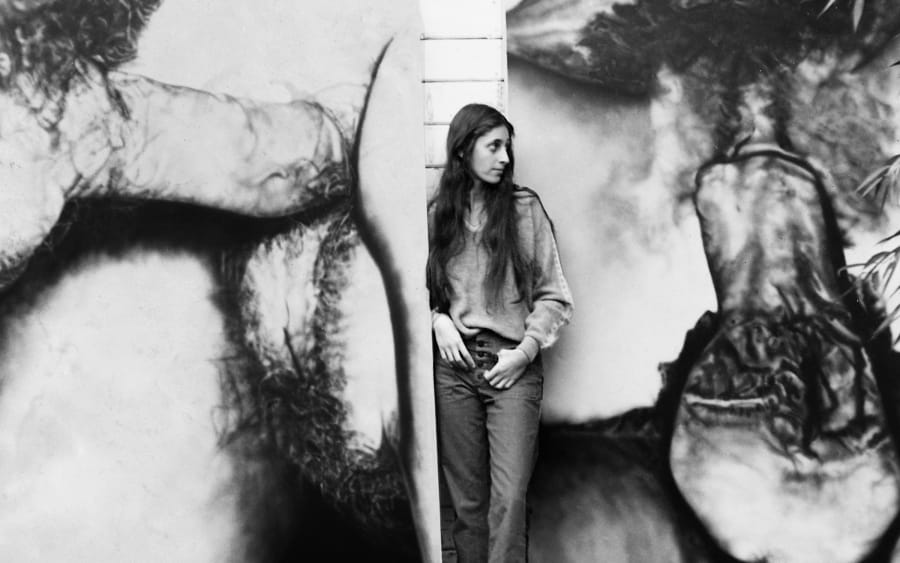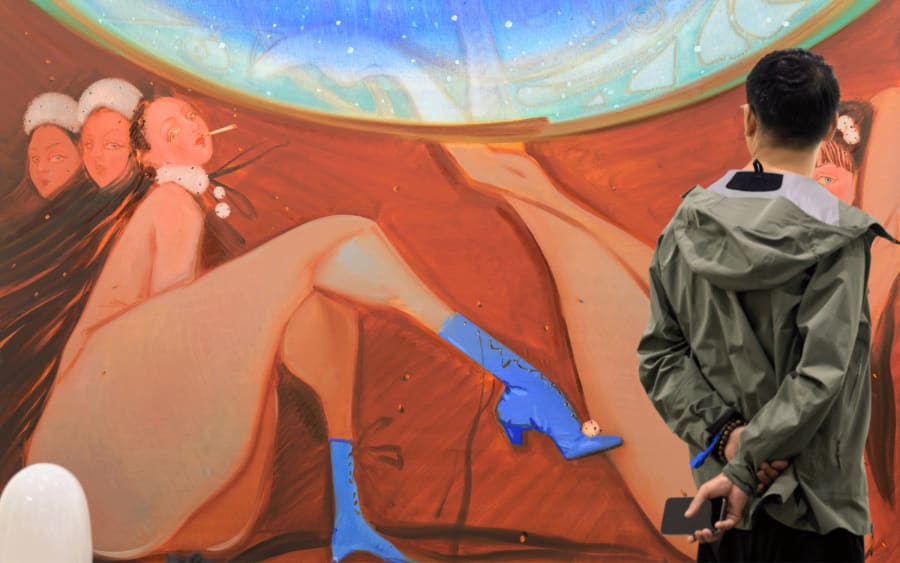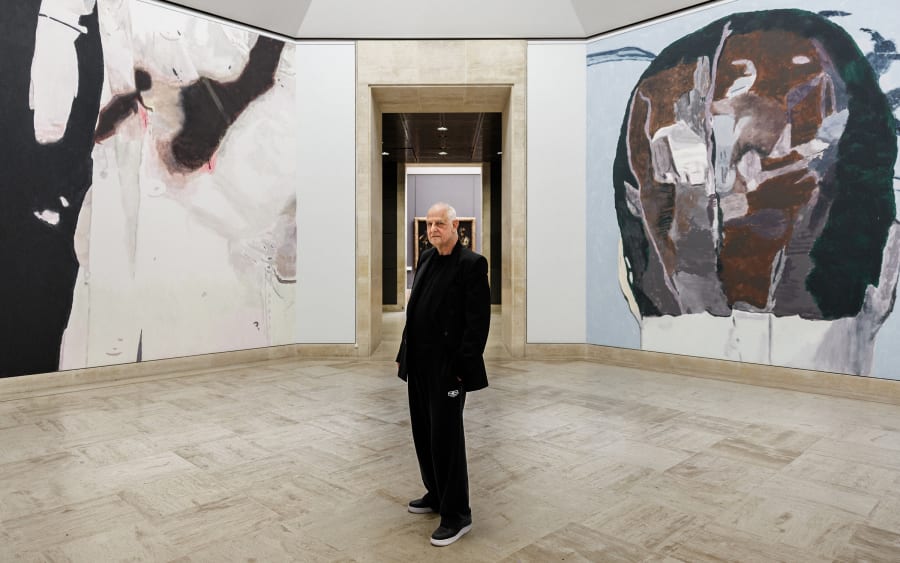Leo Castelli, who cut his teeth as an insurance broker then banker in Paris, is considered to have invented the modern gallery system, but, as the Parisian gallerist Mathieu Capela points out, Castelli also operated much like an emerging dealer – working out of small spaces, recruiting recent graduates, and collaborating with other galleries including the French dealer Daniel Templon.
Since 1957, when Castelli founded his own gallery in his family apartment in New York, the art world has gone from cottage industry to multi-billion-dollar business. Nonetheless, for many gallerists starting out today, Castelli’s core principle of establishing tight-knit relationships with artists still stands. ‘No one wants to be an eternal gold digger, just finding artists and then losing them,’ says Capela, who co-founded his gallery cadet capela with Julien Cadet in 2018. ‘Our aim is to support our artists in their journeys for as long as we can.’
Launching or running a small gallery today comes with its own unique set of challenges: global political unrest, an art market slowdown, and shifting tastes among a younger generation chief among them. But the current climate also presents opportunities for emerging businesses. In May, Martin Brémond joined cadet capela as a partner having worked at Almine Rech and Perrotin for just over a decade. Going from bigger galleries to small means he can be closer to ‘what matters,’ Brémond says, adding: ‘Big galleries are so constrained by financial rules, they don’t really take that many risks.’
Cadet capela has a relatively political program – artists tackle topics from Black Lives Matter to Queer identities. Next year it will show works by the pioneering feminist artist Betty Tompkins, her first solo show in Paris (Tompkins has worked for many years with the trailblazing gallery P·P·O·W in New York). Capela says the goal is ‘to stay relevant, but not be trendy.’ He thinks it is a particularly exciting time to be in Paris. ‘There are lots of good artists living in Paris now,’ he says, though notes that there is ‘a limited pool of French collectors – they don’t grow on trees.’
Margot Samel worked in galleries for 14 years before opening her own eponymous space in New York’s Tribeca two years ago, around the time the market first showed signs of slowing. ‘It’s been a hustle for me since day one,’ Samel says. ‘But I do think, in the long run, it’s healthier to start a gallery in a climate where you just learn to do things on a shoestring budget, versus having to adjust later on.’
Presenting artists from the Baltic region has been a major focus for the gallery; Samel’s last exhibition was organized by the Estonian curator and gallerist Lilian Hiob and featured six artists including Nina Hartmann, Jaanus Samma, and Tai Shani. Samel says collaborating with other galleries has been a way ‘to realize ambitious projects without lavish budgets.’ Her current show is being mounted in tandem with the Montreal gallery Pangée.
Describing the current climate as ‘incredibly competitive,’ Samel says that ‘having a community around me that is supportive rather than competitive is a huge source of comfort.’
The specter of larger galleries poaching artists from their emerging peers has been a perennial problem in the art market. In November 2023, Hauser & Wirth came up with one solution: to partner with younger or smaller galleries in representing emerging artists. Such collaborations allow artists to keep operating at a scale they are comfortable at, as well as keeping emerging galleries in business, while providing street cred and new sources of income for the megas.
Linda Pyke, a director at THK Gallery in Cape Town, notes how the relationship between galleries and artists at the outset of their career ‘is often very intense.’ She adds: ‘When you allow that conversation to develop and mature over decades, it will reflect in the art.’ The South African gallery’s program spotlights young artists from Africa and the Global South – as Pyke says, ‘artists who are very much engaged with cultural narratives and identities, with a view to redefining and challenging conventions.’
Pyke came to the gallery world via auction houses, first cutting her teeth at Christie’s in London before joining Phillips. She returned to her native South Africa in 2017 and joined THK Gallery in January 2020, around 18 months after the firm opened, and two months before the pandemic. Pyke says the gallery was quick to adapt to doing business online, holding its first Zoom panel a week after lockdowns began.
Business savvy and a flair for technology are among the defining characteristics needed to thrive in the gallery world today, according to Pyke. ‘This is underpinned, as always, by strong relationships, with both collectors and artists,’ she says.
As Pyke points out, the pivot to more advanced technologies in Africa was rapid. ‘Where we didn’t have working phone landlines, we leap frogged into the mobile age,’ she says. ‘The postal system is also unreliable, so people are already functioning digitally a lot more than in other places. It was necessity at first but now it’s become an advantage.’
While social media and online platforms are key for reaching collectors, most dealers concur that technology remains a communications tool rather than representing a different business model. ‘Ultimately nothing replaces the dinner where you all sit around the table and talk about art,’ Pyke says. ‘It’s still a relationship game – the art world is as much about people as it is about art.’
Art fairs, though undergoing something of a shakeup, are proof that the art industry remains relentlessly event driven. Nonetheless, emerging dealers say they are being more selective about the fairs they do, with rising costs a consideration. For some, though, fairs have been a lifeline. CYLINDER was founded in Seoul in 2020, initially as an artist studio. It was ‘serendipitously’ participating in a new alternative art fair called The Preview that catapulted CYLINDER to the status of gallery, says its founder Dooyong Ro. ‘It gave me some vision, which was small back then, but has now grown into a big one,’ Ro says.
Virtual salerooms flourished but died back somewhat after the pandemic. Indeed, for most emerging dealers, having a physical space is still paramount. New York’s Mama Projects launched just before the pandemic as a nomadic enterprise. Founder Berto Santana would organize pop-ups in spaces around Manhattan, with shows often only lasting a few days. Earlier this year, he found a permanent space in Chelsea, famed for its cluster of galleries. ‘I’m on the outskirts of Chelsea, and on the sixth floor. I know my limitations – but on the flipside, those limitations allow me to take more risks,’ Santana says.
The gallerist notes how, at 130 m2, his new space is just big enough ‘to bring the program to life.’ He adds: ‘The gallery is reasonable enough in terms of costs that I can put on a show, sell a couple of works, and move onto the next. Each one brings me to a better place in terms of learning how nimbly I can pivot.’ With collectors based in China, Germany, Spain, and Brazil, Santana estimates that more than half of his business now comes via online channels.
For now, Mama Projects does not represent artists. ‘From the beginning, my goal was to find artists without representation in the US,’ Santana says. He scours Instagram and graduate degree shows for new talent and notes that he is likely to start building up a more permanent roster soon, albeit one with a more flexible approach. ‘Growth only comes if you grow together,’ as he puts it.
Not all artists want representation, however, and there is a growing movement to go it alone. Over the past year, established names including Rachel Jones and Peter Doig announced they were leaving their galleries in favor of self-management. The East London gallerist Rose Easton says an emerging generation of artists is also questioning some of the practices associated with representation. She points out that a recent spate of gallery closures in London has shone a spotlight on some more unsavory practices, with large sums of money being owed to artists. ‘Artists that are coming up are wary of the gallery model – they are questioning why galleries are expected to take 50% and why there’s so much opacity around the way things work,’ she says. Easton has a ‘radically transparent’ approach to her business, including having regular check-ins with artists, not only about their sales but also how the gallery is doing in general.
Balancing the gallery as both a commercial and curatorial endeavor remains an ongoing consideration for Easton, who launched her eponymous gallery in 2021. For her second show, with Louis Morlæ, Easton completely reconfigured the space; ‘that set the tone,’ the gallerist says. Her exhibitions are often immersive and crossover with other art forms including music and fashion. ‘These worlds have really merged because of the way people work as well as the impact of the internet,’ Easton notes.
Working with Morlæ propelled Easton to establish a commercial gallery. ‘I had to put down some roots to be able to say that I was going to be around for long enough to support an artist’s career,’ she says. The dealer currently represents six artists, which is enough for now, she says.
Staying nimble has its advantages. As Easton points out, 90% of start-ups fail. She adds: ‘The 10% who succeed do so because they are scrappy – they pick themselves up and carry on, no matter what. That’s the energy you need to run a gallery right now.’
Download the Art Basel and UBS Art Market Report 2024 here
Anny Shaw is a contributing art market editor at The Art Newspaper and author of Resist: Rebellion, Dissent & Protest in Art, Frances Lincoln Publishers Ltd, 2022.
Caption for top image: Noah Pica, Ajar, 2023. Courtesy of the artist and Mama Projects.
Published on July 4, 2024.


